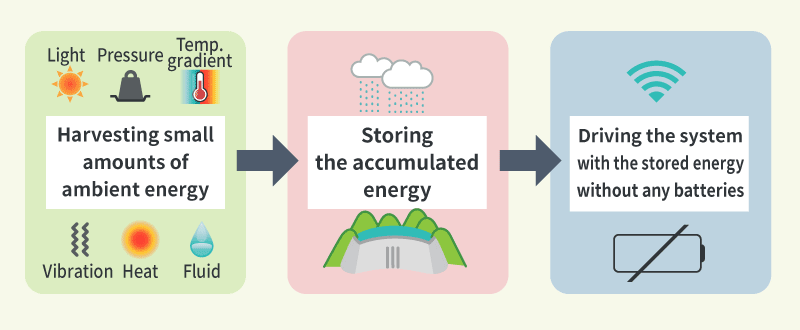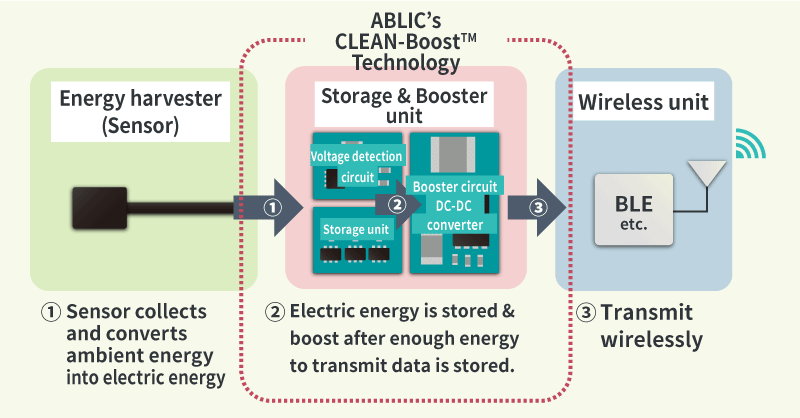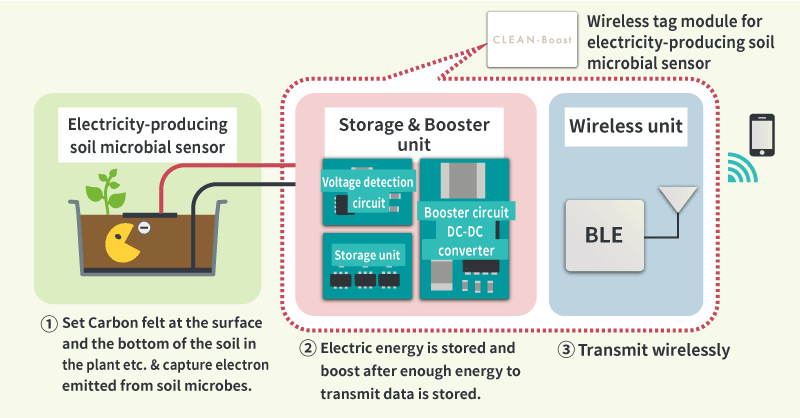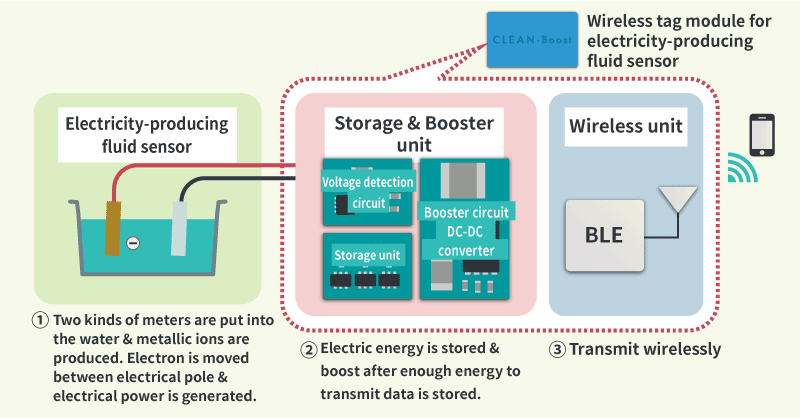![]() 12/25/2019
12/25/2019
Techanalye Co.,Ltd.
This time, I introduce CLEAN-Boost™ technology which ABLIC developed to use small amounts of power generated by energy harvester and enable to create a battery-less system.
Energy harvesting is the process which harvests small energy from surrounding sources such as light, pressure, temperature gradient, vibration, heat, fluid etc., stores and drives systems without using battery (See Fig.1).

CLEAN-Boost™ is the unique power storage and boosting technologies developed through the joint research between ABLIC and Ritsumeikan University. Store microwatt-scale power, boost and secure the significant levels of voltage that enable to transmit wirelessly without battery.

Fig.2 is a flow of the processing. Every time energy harvester (sensor) catch a small event and generate power (Fig.2-1), the power is stored in a storage unit of the CLEAN-Boost™. After enough energy for wireless transmission is obtained, boost the voltage to the levels of enabling wireless transmission (Fig.2-2) and send data through the wireless unit (Fig.2-3). A variety of sensors can be connected to the part of the energy harvester, and various information can be sent to many targets. In other words, you can build a variety of “battery-less IoT” with your sensor.
ABLIC launched “Battery-less Wireless sensor Experiment Kit” in April 2019. It gives you an experience developing system with energy harvester easily.
There are two types of sensors in this new product.

Fig.3 is an example of the utilization of the experiment kit with electricity-producing soil microbial sensor. Electricity-producing soil microbes get organic materials into the body and during decomposing, it releases electrons. When the electrons are caught at a negative electrode, potential difference between negative terminal and positive terminal are generated and currents are produced. Electrical power is obtained by accumulating these small currents.
Electricity-producing soil microbes emits more electrons in the fertile lands which includes a lot of organic materials. This system suggests that it can be put into practical use such as the visualizing device which representing and quantifying the condition of the soil.

Fig.4 is an example of the utilization of the experiment kit with electricity-producing fluid sensor. It consists of two kind of metal board and when they are put into the water, a trace of metal ions is generated, and electrons move between the electrical poles. Electrical power is obtained by accumulating these small currents. The flow after that is same as the experiment kit with electricity-producing soil microbial sensor. You can realize a variety of battery-less IoT when you replace the sensor part.
The demonstration experiments of the system which is using electricity-producing fluid sensor have already been started with Ritsumeikan University as a wet detective system for diaper and plant. And it has already been commercialized as the water leak detection system which is developed with Taisei Corporation.